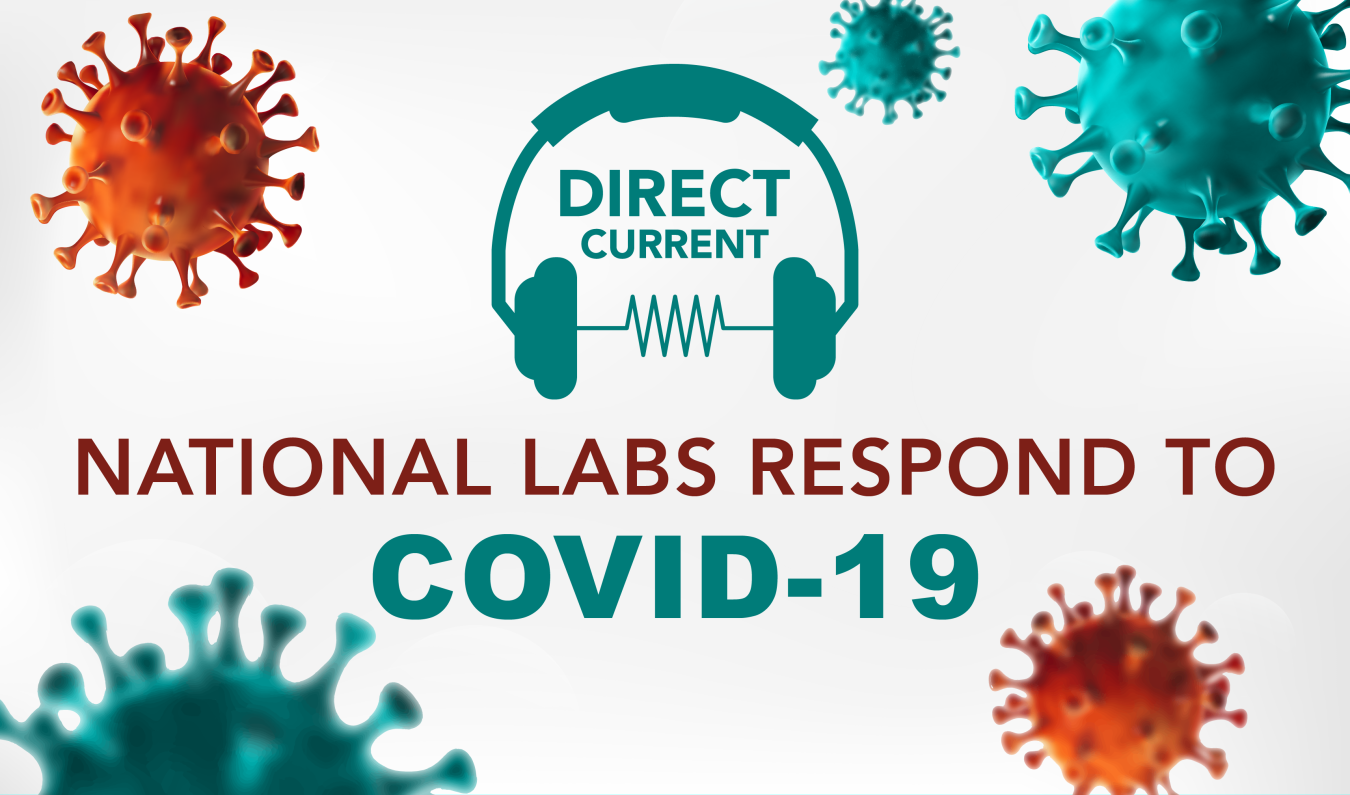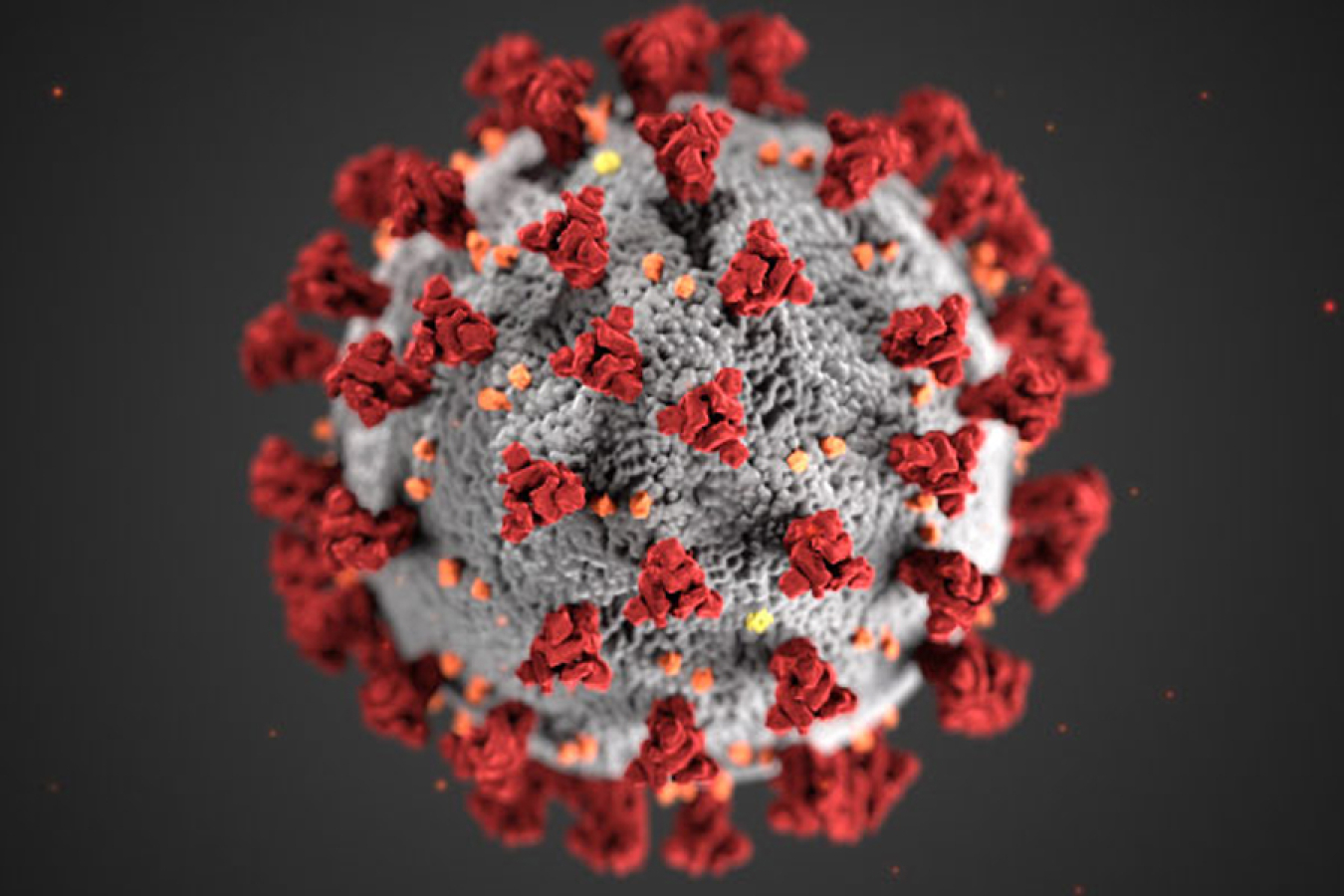
MATT DOZIER: Hello and welcome to Direct Current -- An Energy.gov Podcast. We are back from a short hiatus with an update for you on the novel coronavirus, COVID-19. I’m your host, Matt Dozier. Joining me today is Chris Fall, Director of the Department of Energy’s Office of Science. Chris, welcome to the show.
CHRIS FALL: Thanks, Matt.
DOZIER: We’re currently facing the threat of COVID-19, which the UN World Health Organization has classified as a pandemic. When people think of the response to an infectious disease like this, they usually think of agencies like the CDC, or the Department of Health and Human Services — how has the Department of Energy been involved in the response to the virus?
FALL: Well, first and foremost, the Department of Energy is responding by taking care of its people. We've got a lot of people, not just here in Washington, but at our Labs and sites. Our first responsibility, and what we're very focused on, is making sure they're OK, contingency planning for what might come, but in any nationally sensitive situation, emergency or otherwise, the Department of Energy is here because we've got some responsibilities to the country and to the federal system. One is energy. Our responsibility is to make sure the electrical grid is resilient and working, and working with the private sector that runs that and other elements of the energy system. Another thing we do is we maintain, develop and build the nation's strategic deterrent. That's not something you just walk away from. So we need to make sure that's OK, the materials involved with that are secure, and so forth. And of course we do a lot of science and technology for the country, and so that's an opportunity and one way that we're responding in particular to this crisis.
DOZIER: Tell me more about the work scientists at our National Labs have been doing to understand COVID-19.
FALL: Sure. Great question, and boy have they been fantastic, in two ways — one is, they're always doing science and technology, including on things like viruses, and so they're ready to respond to something like this particular outbreak. But they have been doing some particular things. One thing they've been doing is using our X-ray light sources to take pictures, essentially, of the virus, understand the structure of it, and that's one way to understand how we could impact that virus with drugs, for example, to shut it down. Hand in hand with taking pictures with an X-ray light source is modeling the structure of a virus on a computer. We have phenomenal supercomputers, we use them for things like modeling viruses. We have the capability to do some biochemical characterization in models of disease for example, this is basic research about how viruses spread in cells and tissues, and how we might measure that. So things that could lead to better testing, or to vaccines. And then the other thing we do, which is actually really interesting, is we use these supercomputers for something else — we can model the spread of a disease like COVID-19 in a population, in our country, in the world and so forth, and so we use our computers for that. So there are four ways. I'm sure are some others I'm not thinking of, but four big, broad ways that our scientists are working to help with COVID-19.
DOZIER: Right. And this is happening — so obviously we have 17 National Labs — this is happening all across the country at all these different labs who are doing work in all these different fields, correct?
FALL: Yeah, that's right. Different labs have different capabilities, but we do have light sources at a number of labs, we've got supercomputers at a number of labs. Some of those are Office of Science labs that work more directly with me. Some of them are the nuclear labs, they still do work in biology. So not every lab is working on this, not every lab has the capability, but they are all participating together in a working group that we've put together to ask questions — hey, have you thought of this? Did you try that? And experts from all of those laboratories are getting together to answer those questions in response to this virus outbreak.
DOZIER: And I think that leads into a point I wanted to make about the National Labs — why are they uniquely suited to respond to a crisis, a challenge such as this?
FALL: So we do have, again, we've got, when we're talking about a specific crisis like this virus, we do have some very special capabilities to handle dangerous things including viruses. But let me talk more generally: the Department of Energy has what I like to call "superpowers" when it comes to science and technology. One of those is these big user facilities. When I say "an X-ray light source," we're talking about something that's vast, bigger than a football field — could be much bigger than a football field in diameter, a synchrotron that produces special X-rays, or other instruments like that. So our user facilities are one superpower. Science at scale — there are a lot of agencies that are part of the U.S. science and technology system that do science, that fund science. Uniquely, really, among all of these agencies is our ability to do big science — lots of people working on a problem, they know how to work together, they know how to share information and data. So that's a superpower. And then the other thing we really bring, relatively uniquely, because we have these laboratories — we have these physical places that are doing all different kinds of work — is convergence. So at one laboratory, we may have biologists, yes, but we have chemists, and mathematicians, and computer scientists, and physicists, and all of those people bring different perspectives to a problem. So again, convergence is a superpower of the Department of Energy. So convergence, science at scale, and world-unique really user facilities that we build and maintain and operate on behalf of the country.
DOZIER: Can we talk a little bit about past challenges that the National Labs have helped us tackle? Is there anything that comes to mind at this scale of scientific or human health challenges that the labs have responded to in this way in the past?
FALL: Let me start by saying there's something we did that wasn't really about a human health challenge, but it has completely revolutionized our understanding of humans and human health and human biology, and that's the Human Genome Project. The Department of Energy started the Human Genome Project and then went on to collaborate with the National Institutes of Health to scale it up and sequence an entire human genome, and now of course that's become routine. But we've been in similar situations before, and we've responded in pretty much the same way. When there was the Zika outbreak, when there was the ebola outbreak, our X-ray light sources were used to characterize the pathogens, take pictures of it, we did the same epidemiology modeling. We know how to do this stuff. And so when these crises occur, people call on the Department of Energy.
DOZIER: This disease is clearly a global threat. So how is the Department of Energy coordinating with other agencies, at home and abroad?
FALL: Sure, thats's a great question. And let me say, there are two parts. We started out by talking about the responsibilities of the Department of Energy, so obviously we are connected with other agencies like Homeland Security or FERC on things like the electrical grid and making sure we have power, and if those people get sick or impacted, we have backups for all of that. We obviously are in constant contact regarding, as most agencies are, this emergency response stuff — what's going on with our people, what's going on with our sites, folks like Homeland Security, folks like Health and Human Services that are coordinating the federal government response. We're plugged into all of that and working with them. And of course there's science and technology. So already, we have a long-standing, deep relationship with the National Institutes of Health. I talked about these phenomenal world-class user facilities that we support — well, they're used by the National Institutes of Health all the time. Routinely, not just for a crisis like this. But we're absolutely plugged in. You can imagine, a crisis like COVID-19, a lot of folks are asking what we could do, including scientists, and across the federal government we are coordinated, talking to those folks, who's best equipped to answer a particular question, how can the Department of Energy help? So we're right there at the table.
DOZIER: In times like this, what is something that inspires you or gives you confidence in our ability to rise to this challenge?
FALL: Sure, that's an easy one. It's the people, it's the great people in the Department of Energy. I gotta tell you, not just here in headquarters, but out across the labs and sites, this outbreak popped up, and it's wasn't an, "Oh, what should we do, can we go home?" sort of response. It was, "How can we help?" And it was more than just how can we help, it was, "Here's all the things we think we can do to help, how do we get started? How do we move forward?" And so that inspires a lot of confidence, when people see a problem and they don't run from it, they run to it, and want to know how to help solve it.
DOZIER: Director Chris Fall with the Department of Energy’s Office of Science, thank you for your time.
FALL: Thank you, this was fun.
(SOFT, ELECTRONIC OUTRO MUSIC PLAYS)
DOZIER: Thanks for listening to this episode of Direct Current. You can learn more about the Department of Energy's response to COVID-19 at energy.gov/coronavirus. You can find Direct Current at energy.gov/podcast, or wherever you download your podcasts. Follow us on Twitter @ENERGY, and leave us a rating or a review if you enjoyed the show. Direct Current is produced by me, Matt Dozier. Sarah Harman creates original artwork for each of our episodes. We'll be back soon with more new episodes for you. Stay tuned.
(MUSIC FADES OUT)
When most people think of the response to an infectious disease like COVID-19,
they usually think of agencies like the Centers for Disease Control or the Department of Health and Human Services — but the Department of Energy has an important role to play, as well.
In this episode, Direct Current sat down with Dr. Chris Fall, Director of the Department of Energy's Office of Science, to discuss the agency’s response to COVID-19. Secretary Brouillette has tasked Dr. Fall with coordinating efforts across the Department and its 17 National Labs, where scientists are hard at work performing critical research to help us better understand the virus and limit its spread.
Learn more at /coronavirus.
Energy.gov COVID-19 Hub
The Department of Energy's COVID-19 hub contains a wealth of information about the work our 17 National Labs are doing to understand and combat the spread of the virus, official CDC guidance, and regular updates on COVID-19 response efforts. Check back often for the latest news and information!
Update from Secretary Brouillette
Secretary of Energy Dan Brouillette shared this message about the Department's response to COVID-19 on March 13, 2020.
